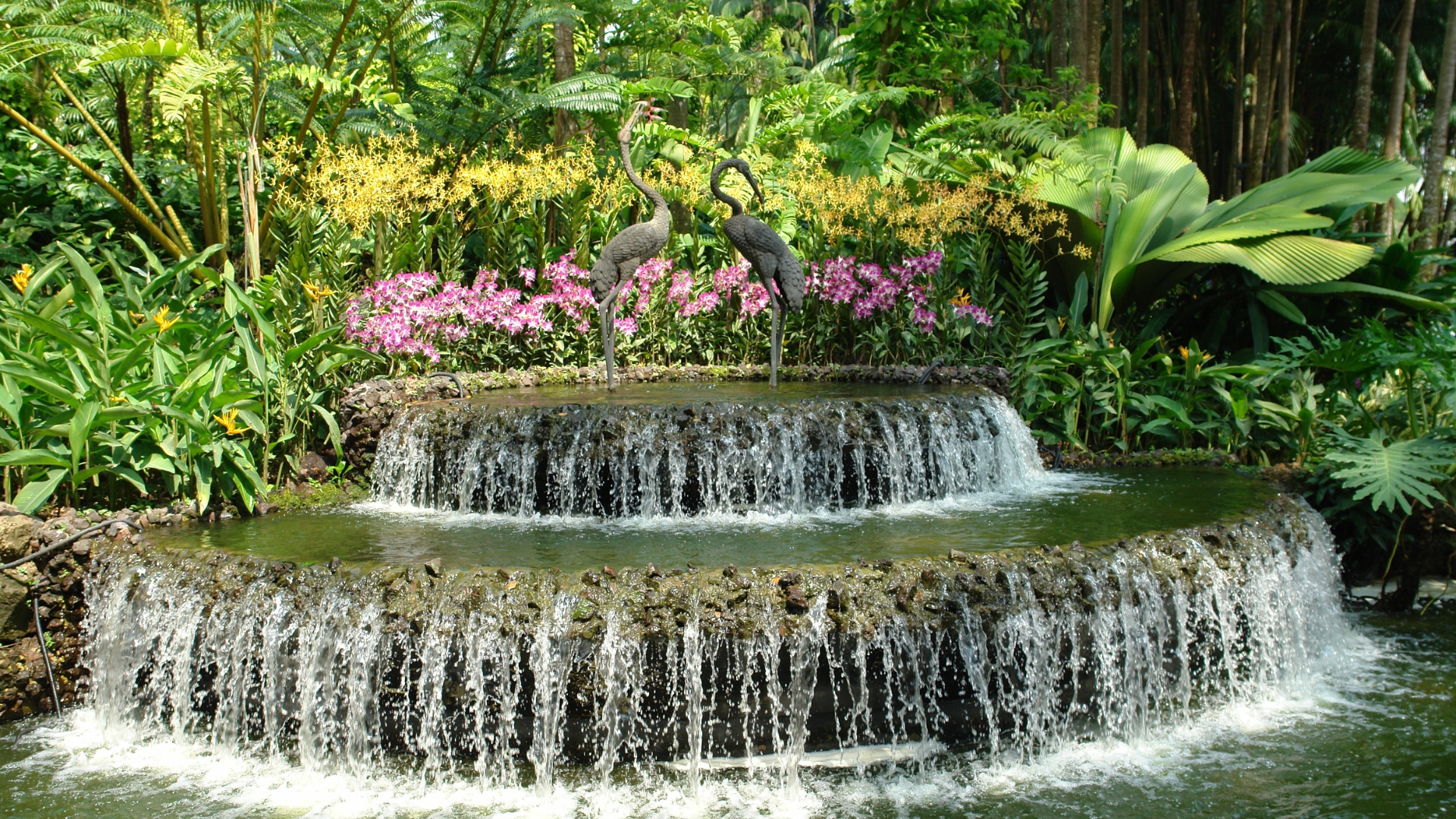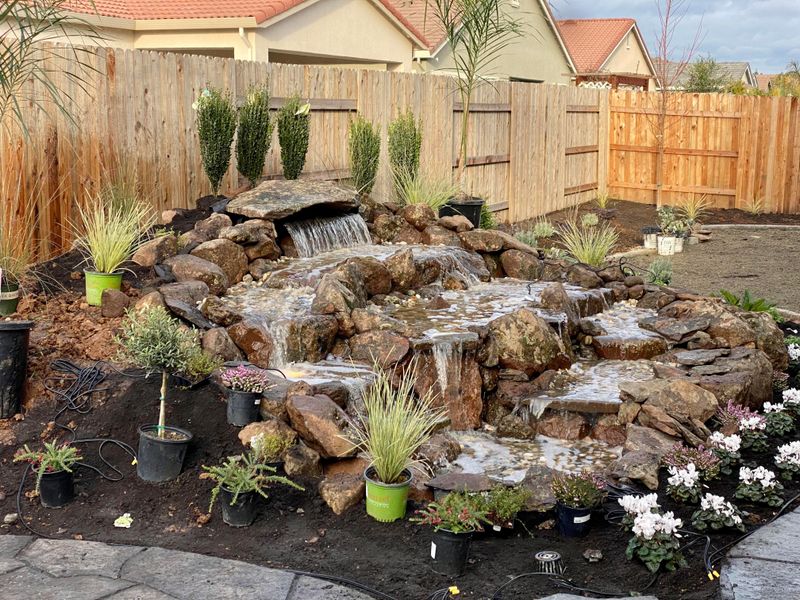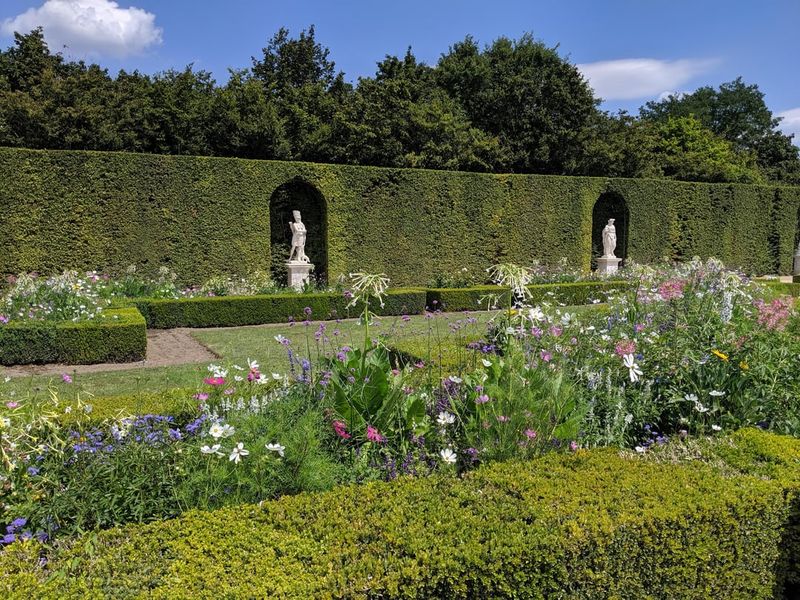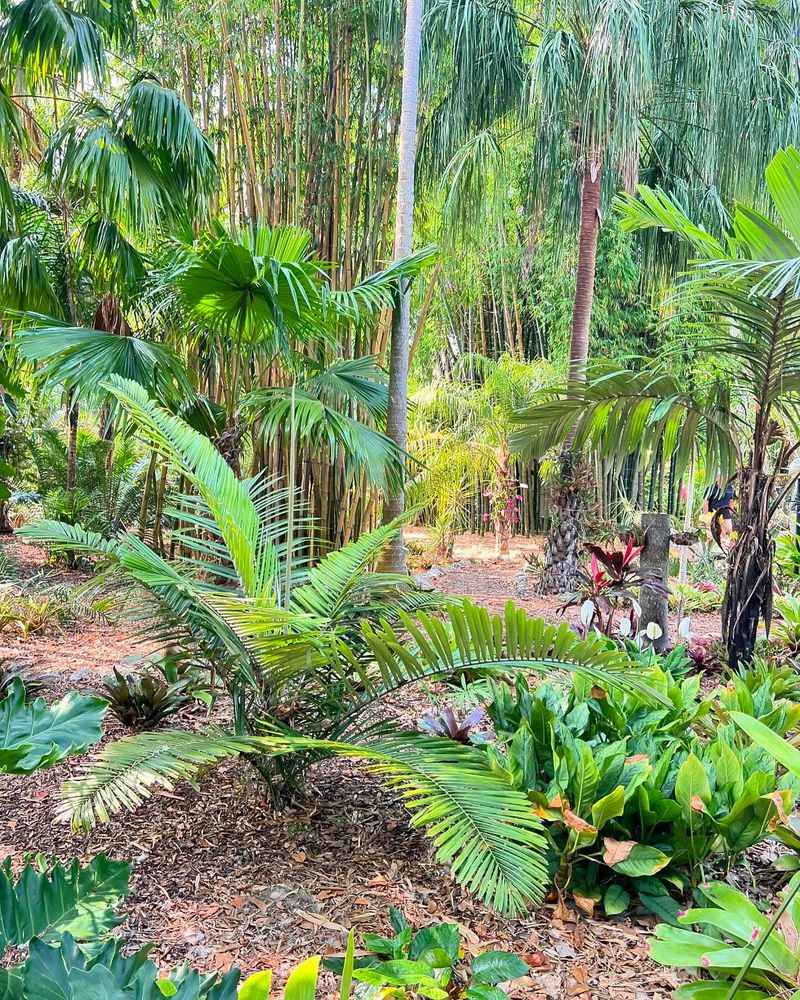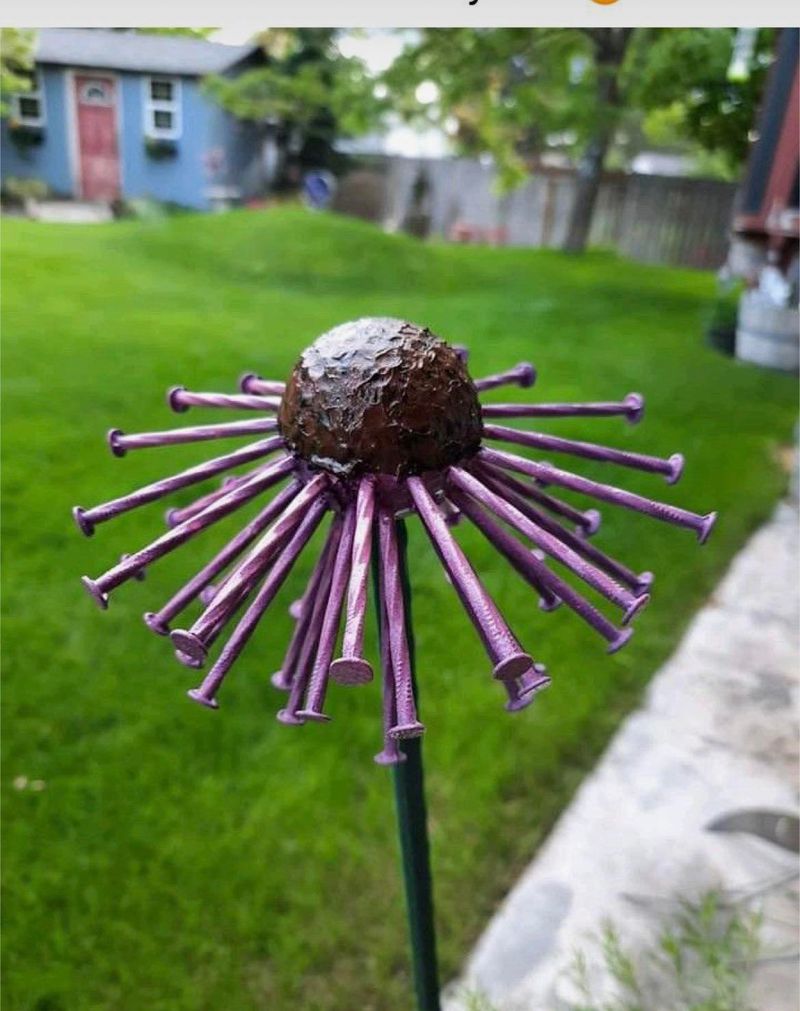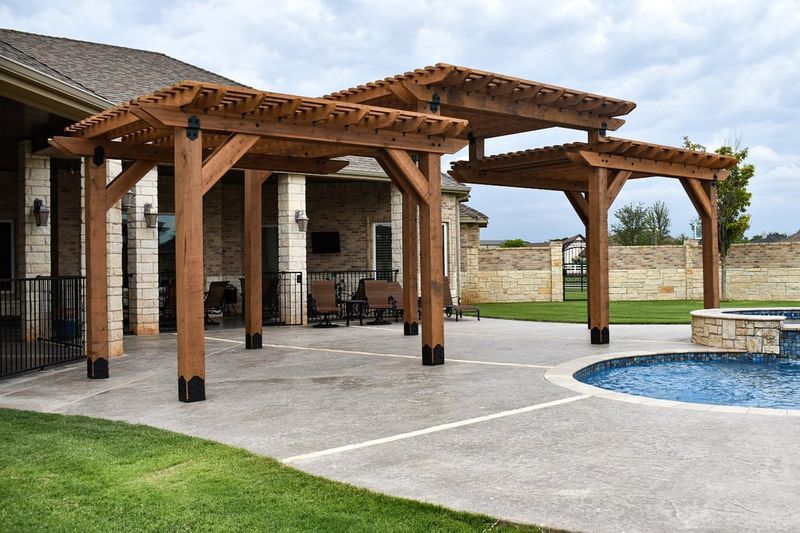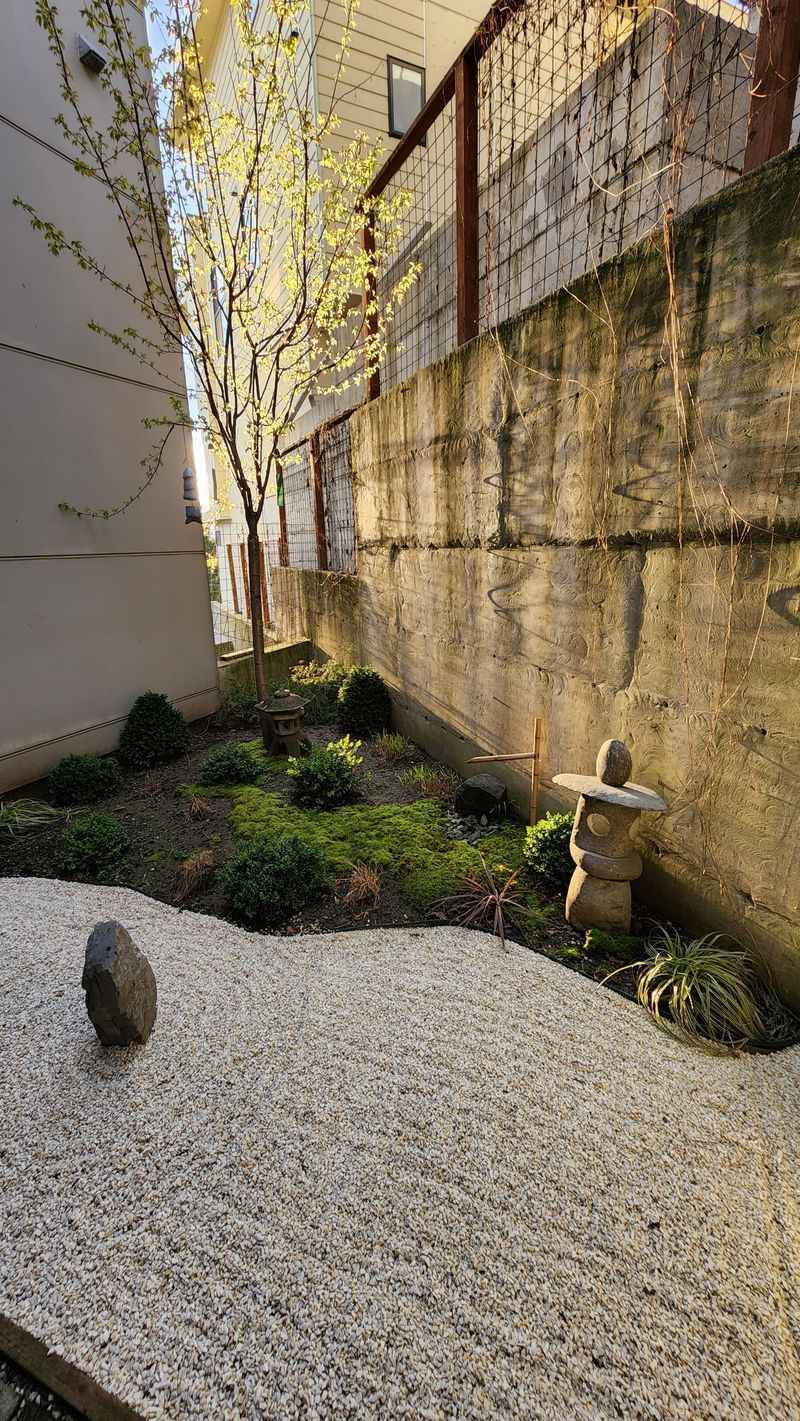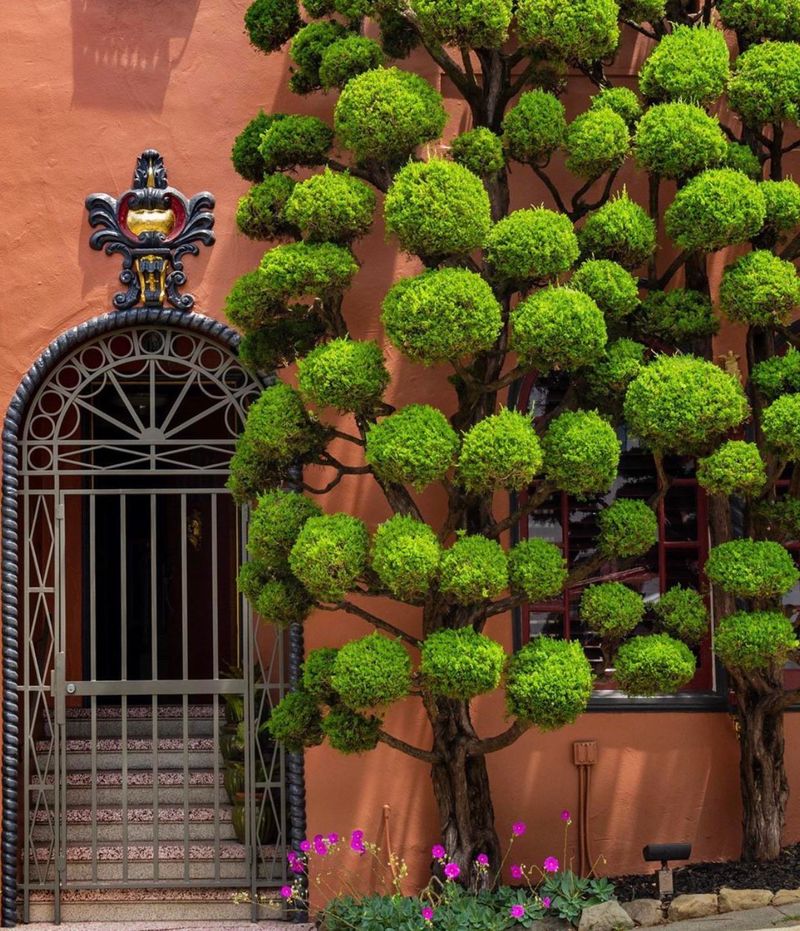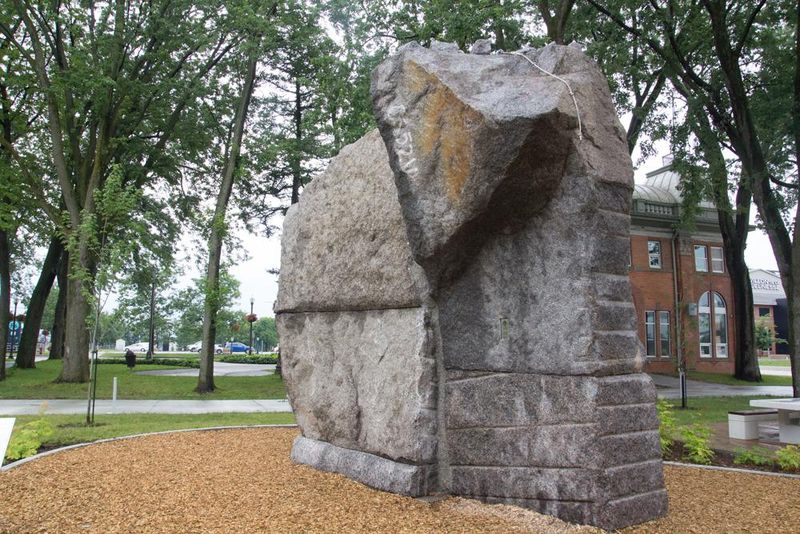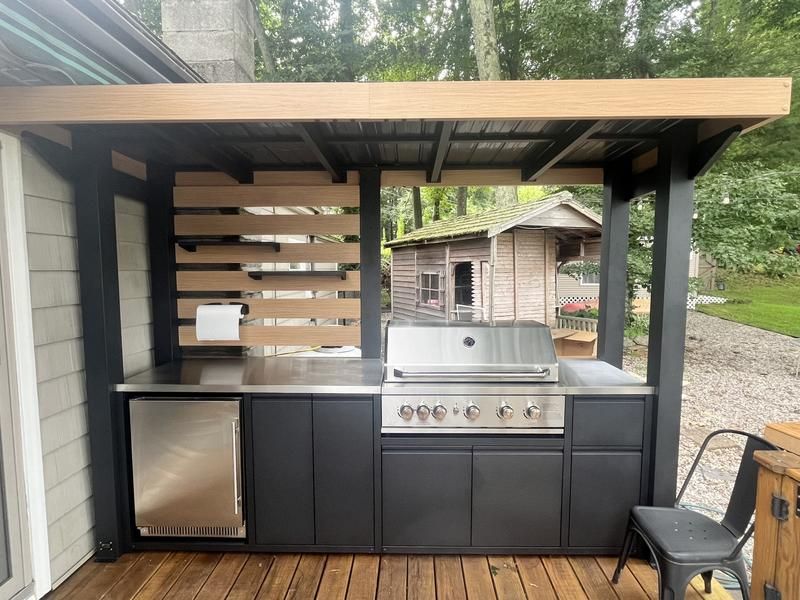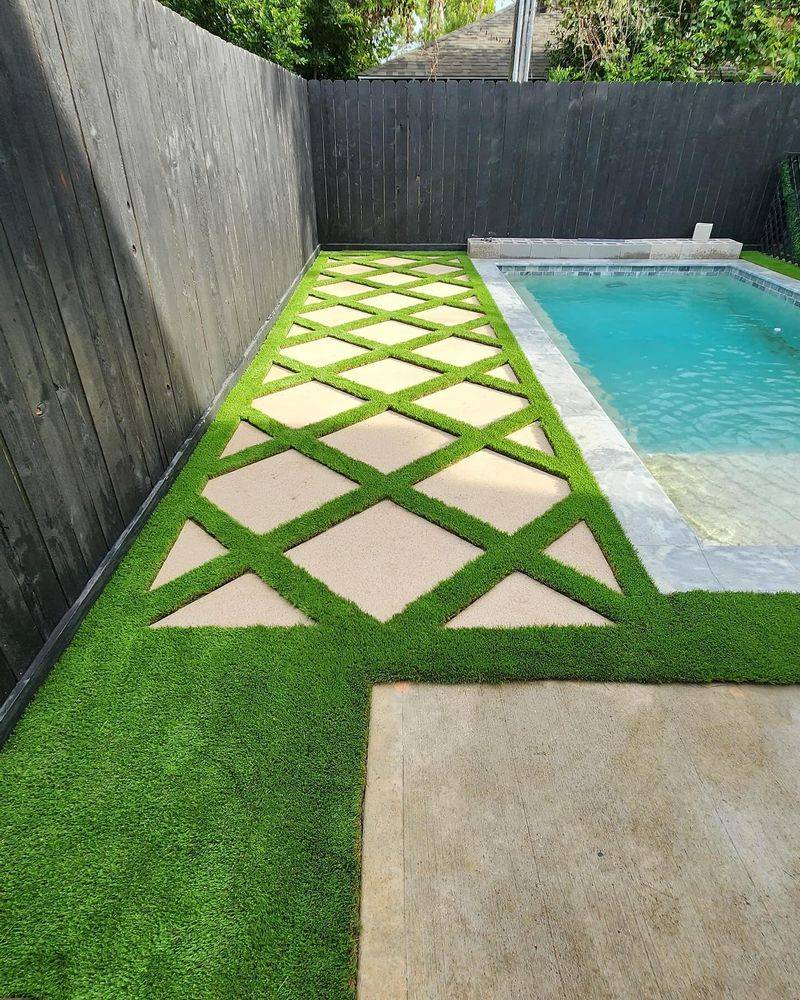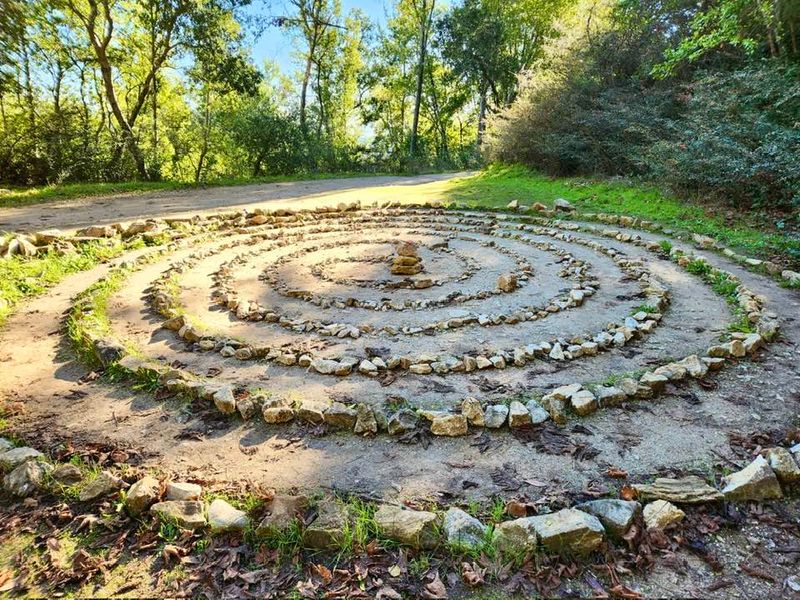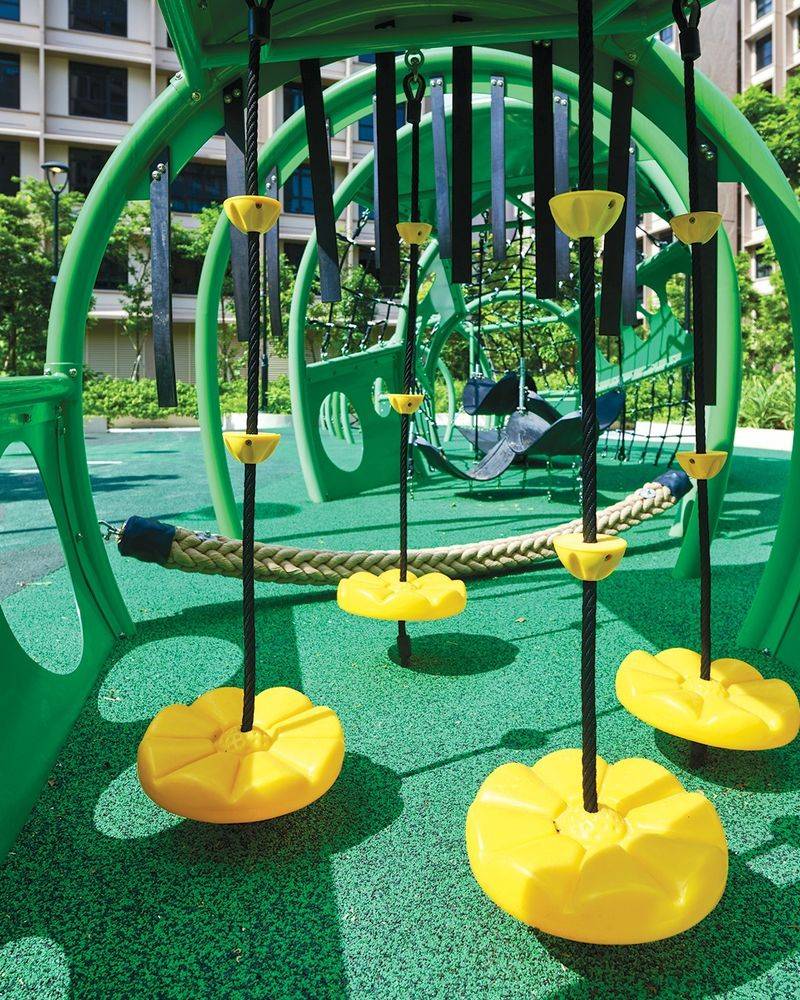Some landscaping ideas look amazing online—but try them in a small yard or the wrong house style, and it’s a whole different story. I’ve seen curved hedges that swallowed porches and fountains that felt like they belonged at a hotel, not a home.
If your space is tight or your house has a strong style, some trends just clash or crowd. Let’s walk through a few that might seem tempting but end up being more headache than wow-factor.
You’ll want to skip these and go for something that actually works with your home, not against it.
1. Massive Water Features
Large fountains or ponds demand significant space and maintenance that small yards simply can’t accommodate. The pumps require electricity, increasing your utility bills, while standing water attracts mosquitoes and needs constant cleaning to prevent algae growth.
The splashing sounds that seem peaceful in showrooms can become irritating when they’re right outside your window day and night. Additionally, water features create humidity concerns for nearby structures and can be hazardous for households with small children or pets who might fall in.
2. Formal French Gardens
Symmetrical, geometric patterns with perfectly manicured hedges look stunning in palace grounds but appear oddly pretentious beside modest suburban homes. The pristine maintenance demands daily attention—hedges need constant trimming and pathways require regular weeding to maintain the strict formality.
Most homeowners underestimate the labor intensity; these gardens were historically maintained by teams of gardeners, not busy individuals. The rigid design also fights against natural growth patterns, meaning you’ll battle nature constantly. For smaller properties, these gardens consume valuable usable space while creating an uncomfortable visual disconnect.
3. Tropical Palm Oasis
Unless you’re in a tropical climate, palm trees and exotic plants create a jarring contrast with traditional home styles. These warmth-loving plants struggle in colder regions, requiring expensive winterizing or replacement after inevitable frost damage.
Many tropical species grow surprisingly large, quickly overwhelming small yards with aggressive root systems that can damage foundations and hardscaping. The fallen fronds create constant cleanup work, while the maintenance costs skyrocket as you fight to keep non-native species alive. Your property risks looking like a confused theme park rather than a cohesive landscape.
4. Excessive Lawn Ornaments
Collections of garden gnomes, flamingos, or concrete statuary quickly transform from charming to cluttered in confined spaces. These decorative elements compete for visual attention and create a chaotic atmosphere that makes small yards feel even more cramped and disorganized.
Seasonal damage from weather exposure means constant replacement costs, while the eclectic styling rarely complements modern or minimalist home architecture. Neighbors might find the visual noise intrusive, potentially affecting property values. Better to select one quality focal piece than crowd your limited space with a mismatched menagerie.
5. Massive Pergolas
Oversized wooden structures dominate small yards, blocking precious sunlight and creating proportion problems. These architectural features make more sense for sprawling properties where they don’t overwhelm the available space or cast everything into perpetual shade.
Construction often requires permits and professional installation, driving costs into thousands of dollars. The wooden beams demand regular sealing and maintenance to prevent rot and insect damage. For modest homes, the grandiose scale often looks architecturally disconnected, like wearing a tuxedo to a casual barbecue.
6. Zen Rock Gardens
Minimalist Japanese-inspired rock gardens require specific architectural contexts to avoid looking like random piles of gravel. The cultural disconnect can feel jarring against Victorian, Colonial, or other traditional Western home styles.
Fallen leaves and debris constantly contaminate the carefully raked patterns, requiring daily maintenance to preserve the meditative aesthetic. Children and pets find these irresistible for digging and playing, quickly destroying your hard work. The gravel creates drainage issues during heavy rains and becomes difficult to remove if you later change your landscaping vision.
7. Elaborate Topiary
Sculpted bushes shaped into animals or geometric forms demand professional-level pruning skills and constant maintenance. What looks charming in grand estates appears comically out of proportion in average yards, creating an unintentional theme-park atmosphere.
Most homeowners underestimate the specialized tools and techniques required, leading to lopsided, unhealthy plants. The formal style clashes with casual home architecture like ranch or craftsman styles. When maintenance inevitably slips, the resulting overgrown shapes look neglected rather than artistic, becoming an eyesore rather than an enhancement.
8. Massive Boulder Installations
Giant rocks require heavy machinery for installation, potentially damaging existing landscapes and structures during placement. Once installed, these immovable features permanently dictate your yard’s layout, limiting future design flexibility.
The scale often overwhelms small properties, creating a visual imbalance that makes your outdoor space feel smaller than it actually is. Water drainage patterns change around large boulders, potentially causing erosion or pooling issues. While dramatic in mountainous settings or sprawling estates, these stone features frequently look contrived and unnatural in standard suburban lots.
9. Multiple Outdoor Cooking Stations
Elaborate outdoor kitchens featuring pizza ovens, built-in grills, and bar areas consume valuable space in modest yards. The expense often reaches tens of thousands of dollars for features that climate limitations make usable only a few months yearly in many regions.
Maintenance becomes a year-round obligation regardless of seasonal use, with weathering affecting appliances and finishes. Smoke and cooking odors can become neighborhood nuisances when houses are closely spaced. The permanent nature of these installations makes them difficult to modify as needs change, potentially becoming dated features that future buyers view as removal projects.
10. Artificial Turf Everywhere
Synthetic grass creates environmental issues by eliminating natural habitat for beneficial insects and preventing proper water absorption. The surface heats up dramatically in summer, often reaching temperatures too hot to walk on barefoot and contributing to heat island effects around your home.
Quality installation costs substantially more than natural lawn establishment, while cheaper versions quickly develop an obviously fake appearance. The plastic material breaks down over time, shedding microplastics into the environment. Adjacent natural plantings often suffer from the reflected heat, creating struggling border areas that defeat the low-maintenance promise.
11. Maze-Like Pathway Systems
Complex winding paths consume disproportionate amounts of limited yard space while creating confusing circulation patterns. What works in botanical gardens becomes impractical in residential settings where direct routes between destinations make more sense for daily use.
The excessive hardscaping creates drainage challenges during heavy rains and increases property heat absorption. Maintenance becomes problematic as weeds inevitably emerge between pavers or cracks develop in poured surfaces. For small yards, the visual busyness of elaborate pathway networks overwhelms the eye and makes the space feel cluttered rather than designed.
12. Towering Privacy Hedges
Massive vegetative walls reaching 15+ feet tall create severe shade problems for both your yard and neighboring properties. These living barriers often violate local height restrictions and create boundary disputes when they inevitably grow beyond property lines.
The root systems compete with other plantings for nutrients and water, while the maintenance becomes increasingly difficult as hedges grow taller than standard ladders can safely reach. Dense evergreen varieties block crucial winter sunlight from homes, increasing heating costs. The scale appears particularly inappropriate around small homes, creating a fortress-like atmosphere rather than a welcoming landscape.
13. Koi Ponds With Exotic Fish
Specialized water features housing expensive ornamental fish require complex filtration systems and constant water quality monitoring. Predators like herons and raccoons view your investment as an all-you-can-eat buffet, necessitating additional protective measures.
Winter protection becomes particularly challenging in colder climates, often requiring heating elements that drive up utility costs. The space requirements for healthy fish environments are substantial—far larger than most homeowners initially realize. When improperly maintained, these features quickly become stagnant, algae-filled eyesores rather than the serene water gardens pictured in magazines.
14. Oversized Play Structures
Commercial-grade playground equipment dominates limited yard space, eliminating room for other outdoor activities. These massive structures often violate homeowner association rules and can create liability issues if neighborhood children use them without supervision.
The visual impact overwhelms residential settings, creating an institutional rather than homey atmosphere. Weather exposure means constant maintenance requirements, while the specialized safety surfacing adds significant installation costs. As children quickly outgrow these features, they become expensive eyesores that potential buyers view negatively during resale.
15. Excessive Mood Lighting
Overilluminated landscapes create light pollution that affects both wildlife patterns and neighbor relations. The tangled wiring systems become maintenance nightmares as connections corrode or landscaping activities accidentally sever buried lines.
Energy costs add up significantly when dozens of fixtures operate nightly, while the theatrical effect often clashes with traditional home styles. The Disney-esque atmosphere created by color-changing LEDs and dramatic uplighting feels particularly out of place in established neighborhoods with historic character. Simple, thoughtful illumination of key pathways and features achieves better results than turning your yard into a miniature Vegas strip.

